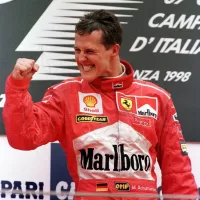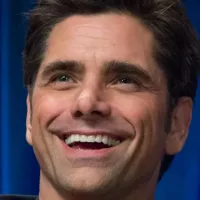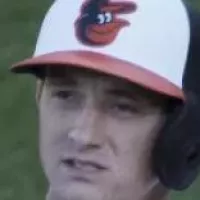The Monaco Grand Prix is a prestigious Formula One race held annually on the Circuit de Monaco. Established in 1929, it is considered one of the world's most important automobile races and part of the Triple Crown of Motorsport, along with the Indianapolis 500 and 24 Hours of Le Mans. Uniquely, it is the only Grand Prix that doesn't meet the FIA's minimum race distance of 305 kilometers (190 miles).
1928: ACM Application for National Status
In 1928, the Automobile Club de Monaco (ACM) applied to the Association Internationale des Automobiles Clubs Reconnus (AIACR) to be upgraded from a regional French club to full national status.
1929: Challenges and changes to the Circuit de Monaco
As of 2025, the Circuit de Monaco is known for its narrowness and demanding nature, with two drivers having crashed into the harbor. Despite minor changes, it remains largely unchanged since 1929 and is considered a major test of driving skills, with exceptions made for its heritage.
1929: Inception of Monaco Grand Prix
In 1929, the Monaco Grand Prix was established, marking the beginning of what would become one of the most prestigious automobile races in the world. It is held annually on the Circuit de Monaco.
1929: Monaco Grand Prix held on Circuit de Monaco since 1929
The Monaco Grand Prix has been held on the Circuit de Monaco since 1929. The Italian Grand Prix is the only race with a similarly long relationship with a single circuit, Autodromo Nazionale Monza.
1933: Monaco Grand Prix Recognized as International Grand Prix
In 1933, Monaco was ranked alongside the French, Belgian, Italian, and Spanish Grands Prix. That year, the race introduced the practice of deciding grid positions by practice time rather than balloting. Achille Varzi won the race after Tazio Nuvolari's car caught fire.
1936: Caracciola wins 1936 Monaco Grand Prix
In 1936, Rudolf Caracciola won the Monaco Grand Prix amid stormy weather conditions that caused multiple crashes.
1937: Von Brauchitsch wins 1937 Monaco Grand Prix
In 1937, von Brauchitsch emerged victorious in a duel against Caracciola at the Monaco Grand Prix.
1938: Monaco Grand Prix Cancelled
In 1938, the Monaco Grand Prix was cancelled due to lack of profits for organisers and high appearance money demands.
1939: Second World War
In 1939, the looming war overtook it and the Second World War ended organised racing in Europe.
September 1945: Racing Resumes in Europe
On September 9, 1945, racing in Europe restarted at the Bois de Boulogne Park in Paris.
1946: Grand Prix Racing Category Defined
In 1946, the Fédération Internationale de l'Automobile (FIA) defined a new premier racing category, Grand Prix, based on the pre-war voiturette class.
1947: Monaco Grand Prix Not Run
The Monaco Grand Prix was not held between 1945 and 1947 due to financial reasons.
1948: Farina Wins Monaco Grand Prix
In 1948, Nino Farina won the Monaco Grand Prix driving a Maserati 4CLT.
1948: Motorbike Race Included
In 1948, a motorbike race was included as part of the Monaco Grand Prix event.
1950: Monaco Grand Prix included in the World Championship of Drivers
In 1950, the Monaco Grand Prix became part of the first World Championship of Drivers.
1951: 1951 Monaco Grand Prix Not Held
In 1951, the Monaco Grand Prix was not held due to budgetary concerns and a lack of regulations in the sport.
1952: Monaco Grand Prix run to sports car rules
In 1952, the Monaco Grand Prix was run to sports car rules instead of Formula Two regulations and did not form part of the World Championship.
1953: No Monaco Grand Prix
In 1953, no Monaco Grand Prix was held due to the car regulations not being finalized.
1954: Fangio's colleague
Between 1954 and 1961 Fangio's former Mercedes colleague, Stirling Moss, went one better, as did Trintignant, who won the race again in 1958 driving a Cooper.
1954: No Monaco Grand Prix
In 1954, no Monaco Grand Prix was held because the car regulations were not finalized.
1954: 2020 Monaco Grand Prix cancelled due to COVID-19 pandemic
In May 2020, the Monaco Grand Prix was initially postponed due to the COVID-19 pandemic. Later, the race was cancelled, marking the first time it had not been run since 1954.
1955: Challenges and changes to the Circuit de Monaco
As of 2025, the Circuit de Monaco is known for its narrowness and demanding nature, with two drivers having crashed into the harbor. Despite minor changes, it remains largely unchanged since 1929 and is considered a major test of driving skills, with exceptions made for its heritage.
1955: Monaco Grand Prix returns to Formula One
In 1955, the Monaco Grand Prix returned as part of the Formula One World Championship with Maurice Trintignant winning. Louis Chiron also competed, becoming the oldest driver to participate in a Formula One Grand Prix at 56.
1955: Monaco Grand Prix designated as European Grand Prix
In 1955, the Monaco Grand Prix was designated the European Grand Prix, an honorary title given each year to one Grand Prix race in Europe.
1957: Fangio wins
In 1957, Fangio won the Monaco Grand Prix, becoming the first double winner of the event.
1958: Trintignant wins
Between 1954 and 1961 Fangio's former Mercedes colleague, Stirling Moss, went one better, as did Trintignant, who won the race again in 1958 driving a Cooper.
1961: Moss Victory
In 1961, Moss fended off three works Ferrari 156s in a year-old privateer Rob Walker Racing Team Lotus 18 to take his third Monaco victory.
1963: Graham Hill wins Monaco Grand Prix
In 1963, Graham Hill won the Monaco Grand Prix for the first time.
1963: Monaco Grand Prix designated as European Grand Prix
In 1963, the Monaco Grand Prix was designated the European Grand Prix for the second time, an honorary title given each year to one Grand Prix race in Europe.
1965: Hill wins Monaco Grand Prix after recovering from an error
In 1965, Graham Hill won the Monaco Grand Prix after recovering from going up an escape road.
1969: Armco Barriers Placed
In 1969, Armco barriers were placed at specific points for the first time in the Monaco circuit's history to improve safety.
1969: Hill wins Monaco Grand Prix
In 1969, Hill secured his final Formula One championship victory at the Monaco Grand Prix.
1972: FOCA Guarantees Entrants
In 1972, Bernie Ecclestone started negotiating deals relying on FOCA guaranteeing at least 18 entrants for every race. The ACM agreed that 26 cars could participate.
1972: Circuit Alterations
In 1972, the Monaco circuit was altered, with the pits moved next to the waterfront straight and the chicane repositioned.
1973: Construction of Rainier III Nautical Stadium
In 1973, the Rainier III Nautical Stadium was constructed, leading to the introduction of a double chicane around the new swimming pool.
1974: ACM Reduces Number of Cars
In 1974, the ACM reduced the number of cars back down to 18 for the Monaco Grand Prix.
1975: Limited Cars Permitted
In 1975, due to the narrow and twisting track, the Monaco Grand Prix only permitted 18 cars to start the race, while other rounds that year allowed 23 to 26 cars.
1976: Sainte Devote Corner Altered
In 1976, the Sainte Devote corner was made slower, and a chicane was placed right before the pit straight.
1979: Prost wins Formula Three support race in 1979
In 1979, Alain Prost won the support race for Formula Three cars, foreshadowing his future success in Formula One.
1980: Monaco Grand Prix held on Circuit de Monaco since 1929
The Monaco Grand Prix has been held on the Circuit de Monaco since 1929. The Italian Grand Prix is the only race with a similarly long relationship with a single circuit, Autodromo Nazionale Monza.
1982: Unexpected Results
In the 1982 Monaco race, several lead changes occurred due to spins and cars running out of fuel. Riccardo Patrese won his first Grand Prix after a chaotic final lap.
1983: ACM Television Rights Deal
In 1983, the ACM negotiated an individual television rights deal with ABC in the United States, leading to disagreements with FISA.
1984: Prost wins the 1984 Monaco Grand Prix amid controversy
In 1984, Alain Prost won the Monaco Grand Prix, which started 45 minutes late due to heavy rain. Nigel Mansell briefly led before crashing, and Prost regained the lead. The race was stopped on lap 31 due to unsafe conditions, with drivers receiving half points. Jacky Ickx was fined for not consulting stewards before stopping the race.
1985: Prost wins the 1985 Monaco Grand Prix
In 1985, Alain Prost won the Monaco Grand Prix after Senna retired and Alboreto faced issues due to an accident involving Piquet and Patrese. Alboreto finished second behind Prost.
1985: Monaco Grand Prix Excluded
In 1985, Jean-Marie Balestre announced that the Monaco Grand Prix would not form part of the Formula One world championship, though the decision was later overturned in court.
1986: Addition of the Nouvelle Chicane in 1986
Although Formula One cars have grown in size, the Circuit de Monaco has rarely expanded, with the notable exception of the addition of the Nouvelle Chicane in 1986.
1986: Prost wins the 1986 Monaco Grand Prix after starting from pole position
In 1986, Alain Prost, starting from pole position, dominated the Monaco Grand Prix. The Nouvelle Chicane had been modified for safety reasons prior to the race.
1986: Nouvelle Chicane Added
In 1986, the Nouvelle Chicane was added to the Monaco circuit by expanding into the nearby water to make the track wider.
1987: Senna wins the 1987 Monaco Grand Prix with active suspension car
In 1987, Ayrton Senna won the Monaco Grand Prix after Nigel Mansell retired. It marked the first Grand Prix win for a car with active suspension. Senna was briefly arrested post-race for riding a motorcycle without a helmet but was released.
1988: Prost wins 1988 Monaco Grand Prix after Senna crashes
In 1988, Ayrton Senna dominated early in the Monaco Grand Prix. Prost was held up by Berger. Senna crashed at the Portier corner, allowing Prost to win the race.
1988: Ayrton Senna's Retirement to his Apartment
In 1988, Ayrton Senna famously retired to his apartment after crashing out of the lead during the Monaco Grand Prix.
1989: Senna has the most victories in Monaco
Between 1989 and 1993, Ayrton Senna achieved five consecutive wins, contributing to his record of six victories in Monaco and eight podium finishes in ten starts.
1989: Ayrton Senna begins his streak of Monaco Grand Prix wins
In 1989, Ayrton Senna began a streak of victories, ultimately winning the Monaco Grand Prix five consecutive times.
1989: Senna dominated 1989 Monaco Grand Prix
In 1989, Ayrton Senna dominated the Monaco Grand Prix while Alain Prost faced difficulties with backmarkers.
1992: Senna wins the 1992 Monaco Grand Prix after duel with Mansell
In 1992, Ayrton Senna won the Monaco Grand Prix after Nigel Mansell, who had dominated the race, suffered a loose wheel nut. Mansell closed in on Senna in the final laps, but Senna held on to win.
1993: Senna has the most victories in Monaco
Between 1989 and 1993, Ayrton Senna achieved five consecutive wins, contributing to his record of six victories in Monaco and eight podium finishes in ten starts.
1993: Race won by Alain Prost or Ayrton Senna
From 1984 to 1993, the Monaco Grand Prix was dominated by Alain Prost and Ayrton Senna.
1993: Ayrton Senna's last Monaco Grand Prix win
In 1993, Ayrton Senna secured his sixth victory at the Monaco Grand Prix, marking his fifth consecutive win.
1993: Senna wins the 1993 Monaco Grand Prix for a record sixth time
In 1993, Ayrton Senna won the Monaco Grand Prix for a record sixth time. Prost faced a time penalty and Schumacher retired, aiding Senna's victory.
1994: Schumacher wins tragic 1994 Monaco Grand Prix
The 1994 Monaco Grand Prix was marked by tragedy, following the deaths of Roland Ratzenberger and Ayrton Senna at Imola. Karl Wendlinger had an accident, and Michael Schumacher won the race.
1996: Panis wins chaotic 1996 Monaco Grand Prix
In 1996, Olivier Panis won the Monaco Grand Prix after starting 14th, following retirements from Schumacher, Hill, and Alesi. Only three cars finished the race.
1998: Ilmor Engines
From 1998, Ilmor built engines funded by Mercedes.
2003: Race held in May
Since 2003, the Monaco Grand Prix has been held in May, moving away from its traditional scheduling during the week of Ascension Day.
2004: Land reclamation expands pit area in 2004
In 2004, land reclamation work was completed to expand the pit area and construct a 6,000-seat grandstand in the Swimming Pool area.
2005: Ilmor Engines
Until 2005, Ilmor built engines funded by Mercedes.
2006: Schumacher penalized for blocking track in 2006
In 2006, Michael Schumacher attracted criticism for stopping his car at the Rascasse hairpin during qualifying, blocking the track. The FIA penalized him, sending him to the back of the grid.
2006: Drivers' Residences in Monaco and Kimi Räikkönen's Yacht
In 2006, several Formula One drivers, including Jenson Button and David Coulthard, had property in Monaco due to its tax status. During the 2006 race, after retiring, Kimi Räikkönen retired to his yacht parked in the harbor.
July 2010: Monaco Grand Prix secured until 2020 in July 2010
In July 2010, Bernie Ecclestone announced a 10-year deal ensuring the Monaco Grand Prix would remain on the Formula One calendar until at least 2020.
2017: No Proper Podium
Until 2017, the Monaco Grand Prix did not have a proper podium. Instead, a section of the track was closed to serve as parc fermé, and the drivers walked to the royal box for the podium ceremony.
May 2020: 2020 Monaco Grand Prix cancelled due to COVID-19 pandemic
In May 2020, the Monaco Grand Prix was initially postponed due to the COVID-19 pandemic. Later, the race was cancelled, marking the first time it had not been run since 1954.
2020: Monaco Grand Prix secured until 2020 in July 2010
In July 2010, Bernie Ecclestone announced a 10-year deal ensuring the Monaco Grand Prix would remain on the Formula One calendar until at least 2020.
2021: Monaco Grand Prix returned in 2021
In 2021, the Monaco Grand Prix returned after being cancelled in 2020 due to the COVID-19 pandemic.
2022: Pérez wins 2022 Monaco Grand Prix after Leclerc strategical error
In 2022, Charles Leclerc secured his first Monaco Grand Prix pole position, but a strategical error caused him to drop to fourth. Sergio Pérez won the race.
2022: Criticism of the Grand Prix
In 2022, several commentators and F1 drivers criticized the Monaco Grand Prix, with Fernando Alonso calling it "the most boring race ever," and Lewis Hamilton stating the race "wasn't really racing."
2022: Formula One Practice Sessions on Friday
In 2022, the first two Formula One practice sessions were moved to Friday, aligning the Monaco Grand Prix schedule with other Grands Prix.
2023: Adjusted inflation calculation
In 1938, the lack of profits for organisers, and demand for nearly £500 (approximately £40000 adjusted to 2023 inflation)
November 2024: New race contract signed in November 2024
In November 2024, the ACM signed a new race contract to remain on the F1 calendar until the 2031 season, relinquishing advertising rights and television coverage to Formula One Management.
2024: Leclerc wins 2024 Monaco Grand Prix
In 2024, Charles Leclerc became the second Monégasque driver to win the Monaco Grand Prix, following Louis Chiron in 1931. The top 10 cars finished in their starting order, with no successful overtakes.
2024: Dull 2024 Monaco Grand Prix leads to rule change
The 2024 Monaco Grand Prix was considered uneventful due to a lap-one red flag that effectively turned the race into a zero-stop event. The lack of overtaking led to slow driving and little change in positions, resulting in the FIA mandating at least two pit stops for future Monaco races.
2024: Charles Leclerc wins Monaco Grand Prix
Until 2024, Chiron remained the only native of Monaco to have won the event. In 2024, Charles Leclerc won the Monaco Grand Prix, making him the second native of Monaco to achieve this victory.
September 2025: Extension to 2035 was confirmed in September 2025
Extension to 2035 was confirmed in September 2025
2025: Challenges and changes to the Circuit de Monaco
As of 2025, the Circuit de Monaco is known for its narrowness and demanding nature, with two drivers having crashed into the harbor. Despite minor changes, it remains largely unchanged since 1929 and is considered a major test of driving skills, with exceptions made for its heritage.
2025: Lando Norris sets fastest qualifying lap in 2025
In 2025, Lando Norris set the fastest-ever qualifying lap at the Monaco Grand Prix, with a time of 1:09.954.
2025: Changes to tyre usage rules for 2025 Monaco Grand Prix
The 2025 Monaco Grand Prix will have different tyre usage rules, requiring two mandatory tyre changes during a dry race. These changes will remain in effect even if wet weather tyres are used. Lando Norris won the race from pole position.
2026: Race will be held in June
From 2026, the Monaco Grand Prix is scheduled to be held in the first weekend of June.
2026: Race scheduled for the first weekend of June from 2026
From 2026, the Monaco Grand Prix will be held on the first weekend of June, avoiding clashes with the Indianapolis 500 and the Coca-Cola 600.
2026: Monaco Grand Prix Event Timing
Prior to 2026, the Formula One event is usually held on the last weekend of May and is known as one of the largest weekends in motor racing.
2031: New race contract signed in November 2024
In November 2024, the ACM signed a new race contract to remain on the F1 calendar until the 2031 season, relinquishing advertising rights and television coverage to Formula One Management.
2035: Extension to 2035 was confirmed in September 2025
Extension to 2035 was confirmed in September 2025
Mentioned in this timeline

Michael Schumacher is a retired German Formula One racing driver...

Lewis Hamilton is a British Formula One racing driver currently...
Bugatti was a French high-performance automobile manufacturer founded in by...
Monaco officially the Principality of Monaco is a sovereign city-state...

Charles Leclerc is a Mon gasque racing driver currently competing...

A car also known as an automobile is a wheeled...
Trending
8 months ago Maldives bans Israelis in solidarity with Palestinians amid Gaza conflict escalation.

3 months ago Brock Bowers' Injury Concerns: Raiders' Crosby Also Added to Injury Report

2 months ago Edison Upgrades South Pasadena Electrical Grid Amidst Storm Recovery, Lifting Evacuation Orders

John Stamos is an American actor and musician who rose to fame as Blackie Parrish on General Hospital earning a...

8 months ago Austin Hays emerges as a top Fantasy Baseball Waiver Wire pickup.

1 month ago Maxxine Dupri, assisted by AJ Lee, dethrones Becky Lynch for Intercontinental Title on Raw!
Popular

Tucker Carlson is an American conservative political commentator known for...

XXXTentacion born Jahseh Dwayne Ricardo Onfroy was a controversial yet...

Ben Shapiro is a prominent American conservative political commentator media...

Candace Owens is an American conservative political commentator and author...

William Franklin Graham III commonly known as Franklin Graham is...

Ursula Gertrud von der Leyen is a prominent German politician...